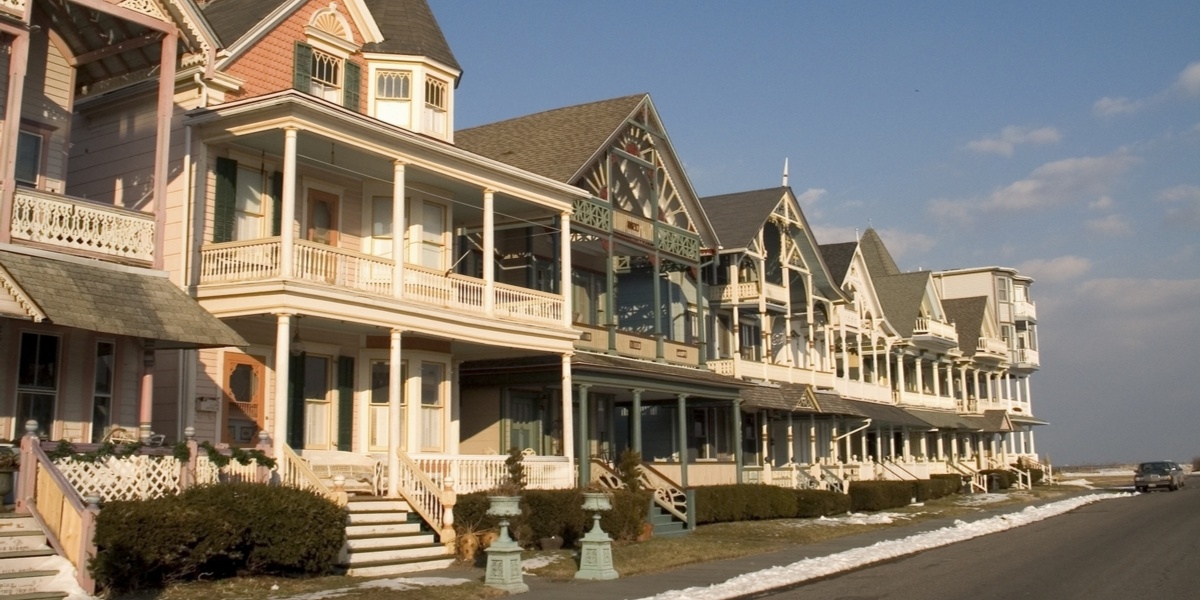Meeting the New Jersey Energy Code in Low-Rise Residential Buildings

As explained in a previous article, the Uniform Construction Code provides the requirements for all new construction and renovation projects in the state of New Jersey. The code includes a series of subcodes for specific building systems and for certain occupancy types, and one of them is the Energy Subcode (NJAC 5:23-3.18). It establishes the minimum energy performance requirements for new constructions and building additions in New Jersey.
The NJ Energy Subcode uses the 2015 International Energy Conservation Code (IECC) as the main reference for low-rise residential buildings, and the ASHRAE 90.1-2013 for all commercial buildings and residential constructions other than low-rise. In both cases, there are specific amendments and changes for New Jersey. According to the Uniform Construction Code, low-rise residential buildings include one-family, two-family and multi-family dwellings up to three stories high.
In addition to separating NJ buildings by type, the Energy Subcode also provides different requirements depending on the climate zone. There are two zones in the state of New Jersey:
|
Climate Zone |
Counties |
|
4A |
Atlantic, Burlington, Camden, Cape May, Cumberland, Essex, Gloucester, Hudson, Middlesex, Monmouth, Ocean, Salem, Union. |
|
5A |
Bergen, Hunterdon, Mercer, Morris, Passaic, Somerset, Sussex, Warren. |
This article will describe the energy code compliance procedure for low-rise residential constructions. An article for the commercial sector and for other types of residential buildings will be published next week. It is important to note that code compliance is not required for buildings without heating and cooling systems.
Planning a low-rise residential project in New Jersey?
Make sure your building meets the NJ Energy Subcode.
Compliance Procedure for Low-Rise Residential Buildings
Low-rise residential buildings in New Jersey have four options to meet the Energy Subcode:
- Calculation-based compliance
- REScheck software compliance
- NJ Clean Energy Program compliance
- Prescriptive package compliance
Calculation-Based Compliance
This is the traditional compliance path for the NJ Energy Subcode. The thermal transmittance values (U-values) are calculated for walls, floors, roofs and other building envelope elements, based on the ASHRAE Handbook of Fundamentals. If the calculated U-values are below the maximum values allowed by the code, the building is compliant.
REScheck Simulation
REScheck is a software package provided by the US Department of Energy, which simulates the energy performance of residential buildings (COMcheck is the commercial version). In the case of New Jersey, the building is approved if it passes the simulation with the 2015 IECC requirements. Some of the main factors considered by REScheck are:
- Building shape and size
- Insulation
- Windows
- Proposed equipment
REScheck is the recommended software, but any alternative provided by the US DOE is accepted, as long as the simulation is carried out according to the 2015 IECC.
NJ Clean Energy Program for Residential New Construction
The NJ Clean Energy Program provides financial incentives and technical assistance for residential projects that exceed the Energy Subcode. As a result, any project approved under this program is automatically code-compliant. To follow this compliance path, the project owner must request a certification from the NJCEP and submit it along with the building permit application.
Prescriptive Compliance
The 2015 IECC provides a table with maximum U-values for various building envelope elements. Prescriptive compliance can be achieved simply by specifying U-values below those provided in the 2015 IECC table.
Passing the Inspection
Once a low-rise residential building has been completed, the following work is inspected to verify compliance with the NJ Energy Subcode:
- The insulation installed is compared with the insulation specified in the construction plans or REScheck simulation.
- Building airtightness is verified through visual inspection or a blower test.
- Duct tightness is verified through an air leakage test.
Working with qualified professionals is highly recommended to speed up the NJ Energy Subcode compliance process. Improving energy efficiency is far easier during the design phase, where only design and specification documents are modified; changes become much more expensive once construction has started.
Keep in mind that the Energy Subcode is only for new construction and additions. Energy requirements for rehabilitated buildings are covered by the NJ Rehabilitation Subcode (NJAC 5:23-6).

Michael Tobias
Michael Tobias, the Founding Principal of NY Engineers, currently leads a team of 50+ MEP/FP engineers and has led over 1,000 projects in the US
Join 15,000+ Fellow Architects and Contractors
Get expert engineering tips straight to your inbox. Subscribe to the NY Engineers Blog below.



